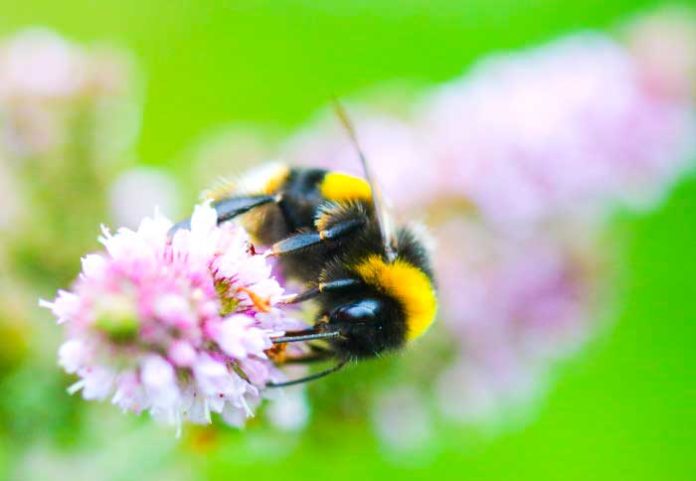Social bees are important insect pollinators of wildflowers and agricultural crops. But their continuous declines is a global concern. A major factor implicated in these declines is the widespread use of neonicotinoid pesticides.
Now, in a recent study by the Imperial College London, scientists discovered that the activity of dozens of genes is changed in bees exposed to pesticides. Scientists analyzed the activity of bumblebee genes after pesticide exposure. They found that dozens of genes can be affected, which are involved in a broad range of important biological processes.
It is already known that exposure to pesticides affects individual bee and colony behaviors, for example affecting their ability to forage and the development of the colony.
Scientists in a new study found that different pesticides, even those that are very similar, affect the bees’ genes in different ways. What’s more, they found that bumblebee queens and workers from the same colony responded differently to the same pesticide.
This is an important clue to why certain pesticides have been linked to bee colony declines.
The team studied two ‘neonicotinoid’ pesticides, clothianidin and imidacloprid, which are known to be neurotoxic – negatively impacting the nervous system. Both pesticides are still widely used worldwide although they were banned in 2018 for outdoor use by the European Union.
The researchers found that clothianidin had much stronger effects than imidacloprid. For worker bumblebees, the activity levels of 55 genes were changed by exposure to clothianidin with 31 genes showing higher activity levels while the rest showed lower activity levels after exposure.
This could indicate that their bodies are reorienting resources to try to detoxify, which the researchers suspect is what some of the genes are doing. For other genes, the changes could represent the intermediate effects of intoxication that lead to affected behavior.
Co-author Dr. Richard Gill, from the Department of Life Sciences at Imperial, said: “Our work reveals that neurotoxic pesticides not only directly target the cells of the nervous system, but also indirectly affect the normal activity of the exposed organism’s genes.”
“Using modern molecular genetic techniques allows us to improve our understanding of pesticide risk to benefit wildlife, such as bees that are crucial for pollinating many of our crops. It can, therefore, inform our selection criteria when we decide which pesticides would be better to use in the environment.”
Lead author of the study Dr. Yannick Wurm, from Queen Mary University of London, said: “While newer pesticide evaluation aims to consider the impact on behavior, our work demonstrates a highly sensitive approach that can dramatically improve how we evaluate the effects of pesticides.”
The pattern contrasted in queen honey bees as 17 genes had changed activity levels, with 16 of the 17 having higher activity levels after introduction to the clothianidin pesticide.
Dr. Joe Colgan, a first author of the study and also from the Queen Mary University of London, said: “This shows that worker and queen bumblebees are differently wired and that the pesticides do not affect them in the same way. As workers and queens perform different but complementary activities essential for colony function, improving our understanding of how both types of colony member are affected by pesticides is vital for assessing the risks these chemicals pose.”
The researchers believe that the approach they have demonstrated could be applied more broadly, providing detailed information on how pesticides differ in the effects they have on beneficial species.
Dr. Colgan added: “We examined the effects of two pesticides on one species of bumblebee. But hundreds of pesticides are authorized, and their effects are likely to substantially differ across the 200,000 pollinating insect species which also include other bees, wasps, flies, moths, and butterflies.”
The study is published in Molecular Ecology.
